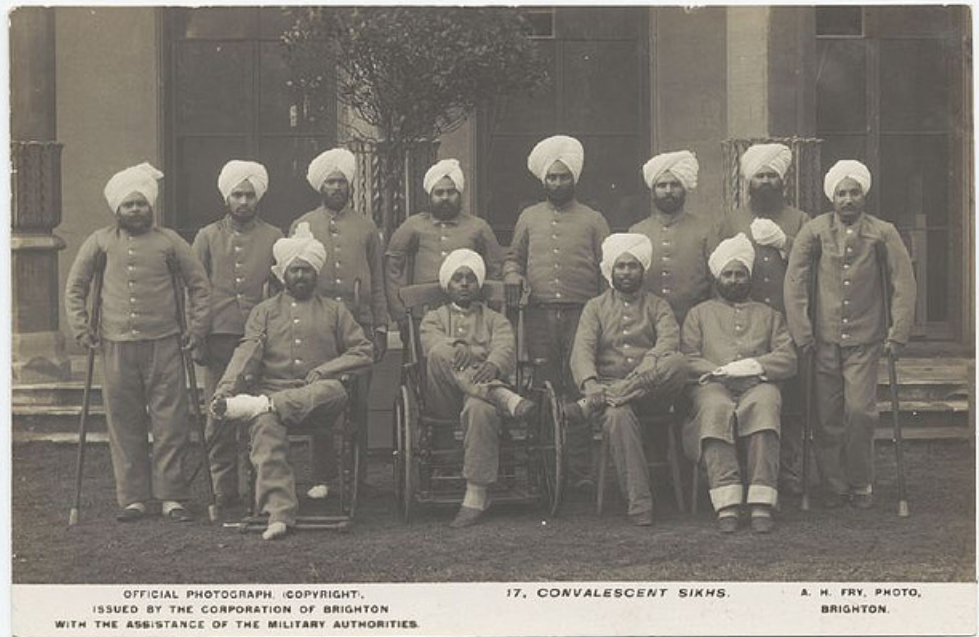Syllabus Edition
First teaching 2024
First exams 2026
The Experience of Migrants in Modern Britain Before 1945 (Edexcel GCSE History) : Revision Note
What was life like for migrants in Britain in the two world wars?- Summary
During World War One and World War Two, people from across the British Empire supported Britain by working in hospitals, factories, or fighting in the armed forces. However, some migrants were treated unfairly. For example, Germans living in Britain during the First World War were called “enemy aliens” and put in internment camps.
There was also racism and violence against Black and Asian communities in cities like Cardiff and Liverpool, especially after World War One. Some people blamed migrants for taking jobs and causing problems. Groups like the British Union of Fascists, led by Oswald Mosley, began targeting migrant communities in events like the Battle of Cable Street in 1936. Migrants played an important role in British society, but they often faced prejudice and poor treatment.
Migration & World War One
Indian soldiers in Brighton
Over 1.3 million Indian soldiers served in the British Army during the First World War
Wounded Indian soldiers were treated in Brighton
The government turned The Brighton Pavilion, previously a royal palace, into a hospital
Around 4,000 Indian soldiers were treated here
The British government treated Indian soldiers in Brighton with suspicion
They restricted their ability to travel to other places in Britain
They could not be treated by white, English nurses
By 1915, the British government deployed Indian soldiers to the Middle East
This meant that wounded soldiers would no longer be treated in Britain

German migrants
The First World War affected how people and the government treated existing migrants
From the 18th and 19th centuries, German migrants established communities across Britain
With the declaration of war in 1914, the government declared German migrants in Britain ‘enemy aliens’
British people attacked German shops and businesses
Thousands of Germans were sent to internment camps
Lascars
In the First World War, many British sailors joined the Royal Navy to serve in the war
When they wanted to return to their previous jobs in 1918, they were unable to
Shipping companies chose to employ lascars over British sailors
They would work for less money
In 1918, riots broke out in port cities like Cardiff and London’s docks
British sailors attacked lascars
The police ended the violence
Race riots after World War One
After the First World War, tensions grew in cities like Liverpool and Cardiff
In 1919, race riots broke out in these cities
Riots in Liverpool
Black migrants became unemployed after the war
Many Black migrants had worked in the city's sugar refineries
When white workers returned, they refused to work with Black migrants, causing them to be fired
Violence between Black migrants and Scandinavians caused a larger race riot at the Queen's Dock
A white mob stoned a Bermudian man called Charles Wootton to death
The police blamed Black migrants for the riot
29 Black men were arrested
The court disagreed, releasing 12 of these without charge
The government repatriated many Black migrants immediately after this
Riots in Cardiff
White mobs attacked Somali and Arab sailors
An Arab sailor was killed by a head injury
An enquiry could not determine if this was caused by a table leg or a police truncheon
The police arrested Somalis for causing the attacks
The court found all of them not guilty

The Battle of Cable Street
In 1936, the British Union of Fascists (BUF), led by Oswald Mosley, tried to spread anti-migrant ideas
The BUF organised a march through an area of London with a large Jewish community
Fighting began between:
the BUF
Jewish residents
supporters of Jewish residents
the police
The police eventually brought the march under control

Migration & World War Two
German migrants
The British government treated German migrants better than they had during the First World War
Most Germans in Britain were not sent to internment camps
Britain accepted German migrants who had fled from Nazi Germany
This is shown through the Kindertransport programme
Examiner Tips and Tricks
How the British government differed its treatment of German migrants between the two world wars is a great example of change in the experience of migrants.
Caribbean migrants
People from across the British Empire and Commonwealth helped with the war effort
Caribbean migrants worked in:
factories
hospitals
civil defence
Others served in the Royal Air Force (RAF) or merchant navy

Worked Example
Explain one way in which the experiences of migrants in Britain in the years c1900-present were different from the experiences of migrants in the period c1700–c1900.
(4 marks)
Answer:
One way the experiences of migrants in c1900-present were different from those in c1700–c1900 is how they were treated by the government. In World War One, Germans living in Britain were seen as a threat and labelled ‘enemy aliens’, with many being placed in internment camps. In contrast, in c1700–c1900, although migrants like Irish or Jewish communities often faced hostility from the public, they were not targeted by the government in the same way. The government made some effort to protect them, such as the two government committees into antisemitism in the 19th century.
Examiner Tips and Tricks
To achieve full marks on this question, you should:
Identify a clear difference between migrants' experiences in the c1700-c1900 and c1900-present.
Use evidence from both periods, clearly linked together.
Use comparison language like "in contrast"

You've read 0 of your 5 free revision notes this week
Unlock more, it's free!
Did this page help you?

